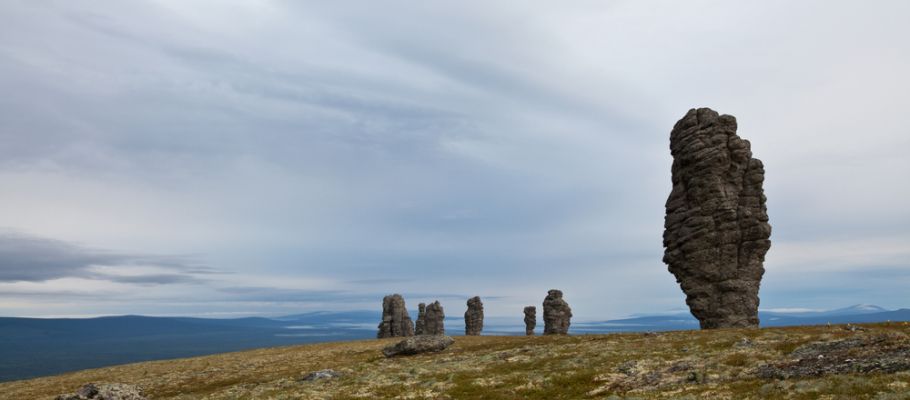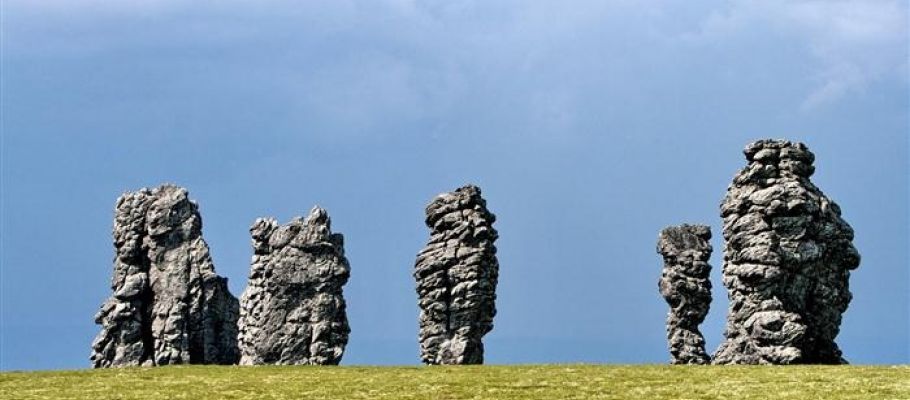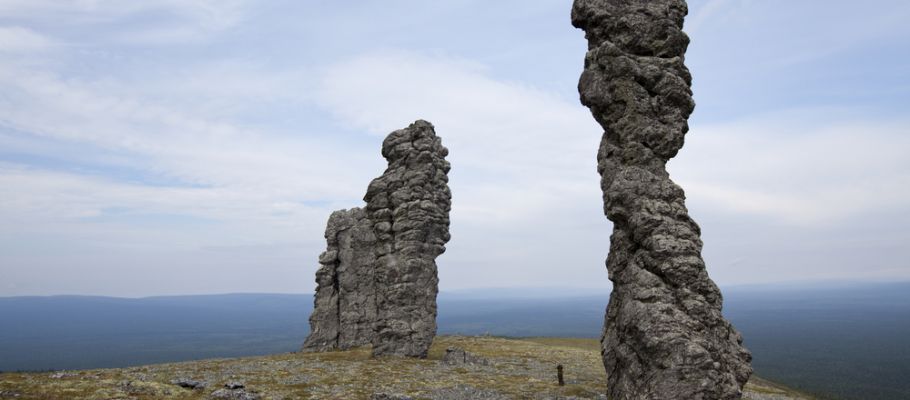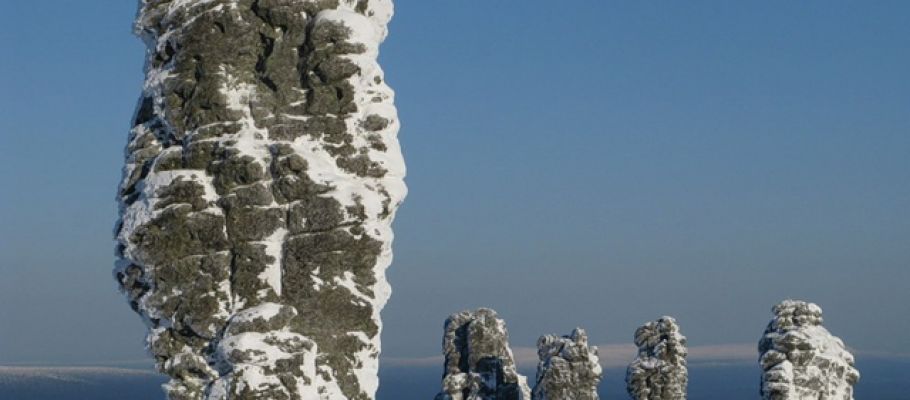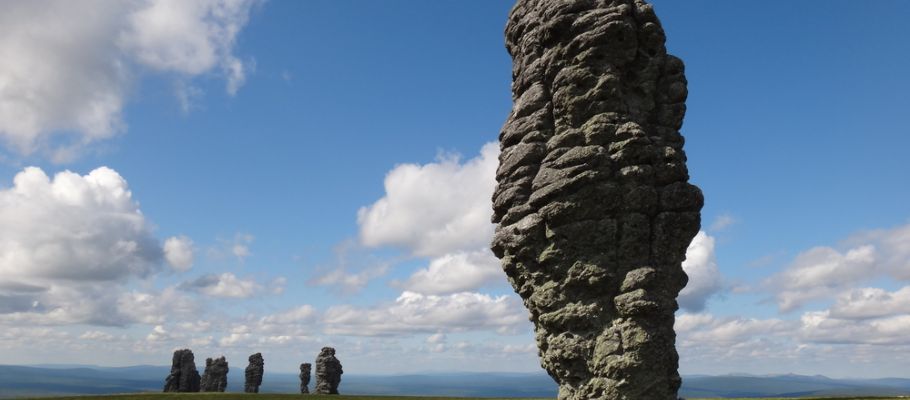Manpupuner, is more often referred to as the Manpupuner Rock Formations. They are also known as Seven Strong Men Rock Formations or Poles of the Komi Republic. They consist of seven stone pillars that are uniquely distributed in the Ural Mountains.
The cultural legend suggests that these pillars were originally a group of giant Samoyeds marching to conquer the Mansi people. Once the laid eyes upon the holy Mansi mountains, the leader dropped his drum with the entire group freezing as the stone pillars.
The Manpupuner was declared one of the Seven Natural Wonders of Russia on June 11, 2014. Visitors and potential travelers should discover and learn more about what makes the Manpupuner one of the Seven Natural Wonders of Russia.
What makes the Manpupuner a natural wonder of Russia?
Statistically speaking, the rock formations are unique repeating no where in the world. These monoliths reach heights ranging from 98 to 138 feet (30 to 42 m).
Aesthetically speaking, the geyser field, the valley, lakes and surrounding hills and mountains are one of the most picturesque areas. A local campaign in Russia declared the Valley of Geysers as one of Russia’s seven wonders, which is a compilation of man-made and natural wonders. Although not a global campaign, it still speaks to the splendor of the wonder. The Valley of the Geysers also has the distinction of being a UNESCO World Heritage Site.
Although only a local campaign, the Manpupuner was recognized by Russian locals as one of the country’s wonders, which still speaks to the unique natural value.
What are the best ways to see and experience the Manpupuner?
The best and really only way to see and experience the Manpupuner is on foot as you trek about and observe these wonders from different angles. Ideally, you enjoy being outdoors and hiking, because once you have seen them, there is little else to do. Some people attempt to climb them, but their steepness and unique shapes makes this a real challenge except to the highly experienced climber.
What is the Manpupuner weather like?
The Komi Republic is rather remote northern region of Russia. Winter temperatures can get down around -40oF (-40oC). The spring months are still cold with temperatures hovering around freezing 32oF (0oC). Snow should be expected in November with the grounds blanketed in white through most of May.
The warmer temperatures of the summer months ushers in the mosquitoes and bugs. They are rather prevalent in June and July and only start to disappear in August.
When is the best time to visit the Manpupuner?
The best months to visit the Manpupuner are during the summer months of June through August. June and July tend to have more mosquitoes and other bugs, with their presence lessening during the month of August. This makes August the best month to visit the Manpupuner.
There are some who argue that the best time to visit the Manpupuner is during the winter months. This really takes and outdoor winter enthusiast because temperatures can get to -40oF (-40oC). The benefits of travel during this time includes using cross country skis for faster access, aesthetically beautiful pillars adorned with ice and snow, and no mosquitoes. If you want to leverage the void of mosquitoes and witness the snow and ice on the pillars, then you should travel during the month of March. The snow still covers the ground, but temperatures move closer to 32oF (0oC).
How do you get to the Manpupuner?
Travel to the manpupuner is near impossible due to the remote nature of their location. The famous monoliths are located at least 62 miles (100 km) from any rail station or motorway. The district of Komi Republic, where the manpupuner are found, is highly inaccessible. The best way to get to the Manpupuner is by use of helicopter, where you can fly out to the monoliths and explore them at your leisure. You can hike there as well; it is quite a distance but of course more economical than using a helicopter.
Photography Tips for capturing the Manpupuner
There are no specific insights or tips for photography at the Manpupuner at this time. Tips and insights will be added as experienced or discovered. If you are a photographer and have insights to share for future photographers visiting the Manpupuner, please submit them to Seven Wonders through the Contact Page.
Since you are on foot, you will be able to meander about the pillars and photograph them from different perspectives depending on the sun and the lighting you desire.
Photography Credits
The winter images of the Manpupuner were captured by the Russian Geographical Society.
The blue sky image featuring five of the monoliths was captured by the Republic of Komi.
